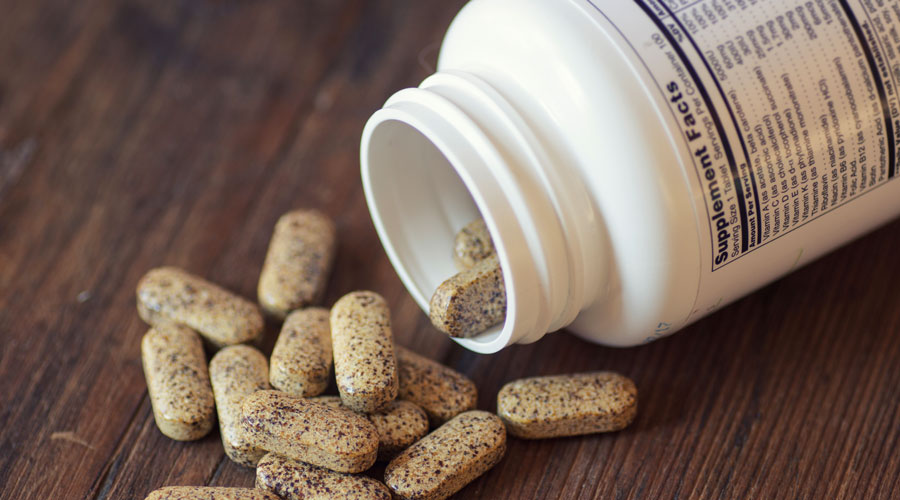Do you know what over-the-counter (OTC) products patients are looking for this year?
As prescription margins continue to shrink, independent community pharmacies need to look to other areas to boost sales and continue providing value to patients, like the front end.
Drug Store News (DSN), a leader in drug store and pharmacy news covering business, retailers, supplier information and financial data, published a new report in March 2017 that examined the current trends in OTC, including breakthrough brands and growth categories that retail pharmacies should be paying attention to.
Increase your independent community pharmacy’s bottom line by taking advantage of this year’s top OTC trends.
Trend 1: Demand for age-related OTCs is increasing
As the population ages, the demand for age-related OTC health products and remedies continues to increase.
For example, adults aged 55 and older maintain the highest percentage of supplement use, according to the 2016 Consumer Survey on Dietary Supplements by the Council for Responsible Nutrition (CRN).
Your pharmacy can meet this demand by offering more products to assist older adults. Make sure to stock your shelves with products in this revenue-generating category, including supplements, incontinence solutions, products that support memory function and eye-care products.
Trend 2: Aromatherapy sales are on the rise
Consumers are exploring natural remedies to enhance their health beyond just physical wellbeing.
Aromatherapy has become a popular category for individuals wanting to tap into their spiritual and emotional sides, and it’ll continue to grow in 2017.
Consider stocking products such as essential oils, body oils and bubble baths to attract new patients and generate additional revenue.
Trend 3: Millennial moms want natural and alternative products
Moms want what’s best for their kids, and in today’s world they’re looking for products that are natural, safe and effective, such as homeopathic remedies.
With moms’ busy lifestyles, they’re capitalizing on the convenience of purchasing these products in places like your independent retail pharmacy.
Focus on targeting young moms in your community by carrying a larger selection of homeopathic products. Earning the trust of these patients will likely increase referrals and position your pharmacy as a trusted resource for parents in your community.
Trend 4: DME sales are increasing
The market for home health care products continues to grow as baby boomers get older, meaning durable medical equipment (DME) sales are on the rise.
Older patients, including those transitioning from the hospital to home setting, need equipment to assist them with basic activities for daily living (ADLs).
Independent pharmacies can boost their bottom lines by expanding their product offerings to include items such as wheelchairs, walkers, stair lifts and bathroom safety products.
Trend 5: Wearables are changing the health industry
With more people working to improve their physical health, wearables are becoming increasingly popular.
Wearable fitness trackers motivate many Americans to get moving, and these health tracking products continue to get more robust.
This could be a big revenue-generating category for independent retail pharmacies, as more than 75 percent of consumers reported they’re willing to wear technology to track their lifestyle, according to the 2016 Accenture Consulting survey.
Trend 6: Sleep remedy sales are growing
It’s recommended that adults get at least seven hours of sleep a night, but a 2016 study by the Centers for Disease Control and Prevention (CDC) found that more than one-third of Americans aren’t getting enough.
This lack of sleep is weighing on Americans’ health, leading to a growth in sales of sleep remedies.
Target sleep-deprived patients at your pharmacy by offering a variety of products to aid in sleep, including melatonin and anti-histamines.
Trend 7: Meal-replacement products are among breakthrough brands
More Americans are actively seeking to lose weight, meaning healthier snack and meal-replacement solutions will continue to see growth.
In 2016, the top breakthrough brands that drove sales across all OTC aisles included leading meal-replacement solutions, such as Premier Protein, Quest Nutrition and Clif Bar, according to the DSN report.
The growing baby boomer population presents an even greater market for these products, as aging Americans are increasingly looking for better nutrition options to stay healthy and live longer.
Trend 8: Pain relief devices are a key growth driver
Transcutaneous Electrical Nerve Stimulation (TENS) therapy products are starting to drive sales in the analgesics category.
Patients are looking for alternatives to traditional OTC pain relievers, especially patients who are already taking prescription medications.
Independent pharmacies can benefit from the repeat business generated by patients buying these products due to the need for replacement pads for a majority of TENS devices.
Trend 9: Allergy medicines are especially important this year
Allergy seasons seem to be getting progressively worse, and patients are desperate to find relief for their symptoms.
Last year was the second-warmest year on record in the U.S. with significant precipitation levels, leading to an uptick in sales for allergy medications.
As patients’ allergies continue to worsen, your independent pharmacy can focus on increasing sales by carrying the most effective, revenue-generating products.
Trend 10: Probiotics are emerging as one of the fastest-growing markets
The market for probiotics is growing fast, with a growth rate of 15 percent in 2015, according to a report by Kline Group, a company that provides business management consulting and market research services.
Consumers are starting to recognize the benefits of taking probiotics to improve their digestive health and boost their immunity.
Your independent pharmacy can help patients choose a probiotic that’s best for them and profit from the higher price points they offer compared to other digestive health products.
Make the most of your front end by keeping up with the top trends in supplements.












